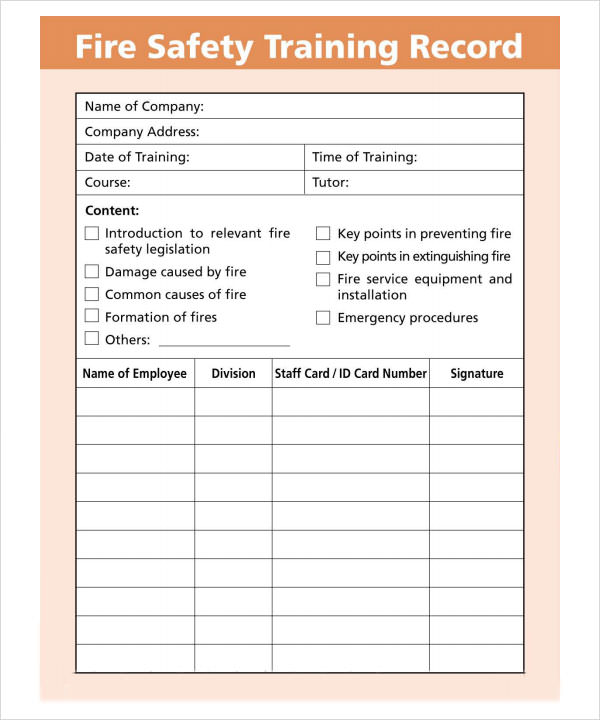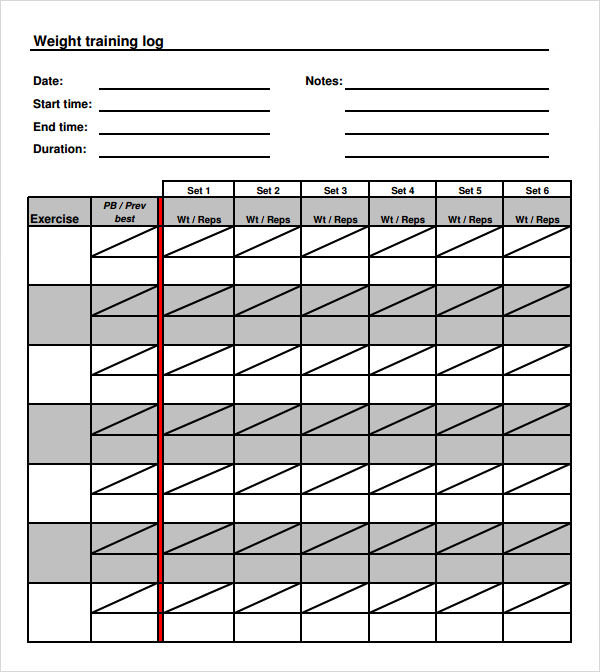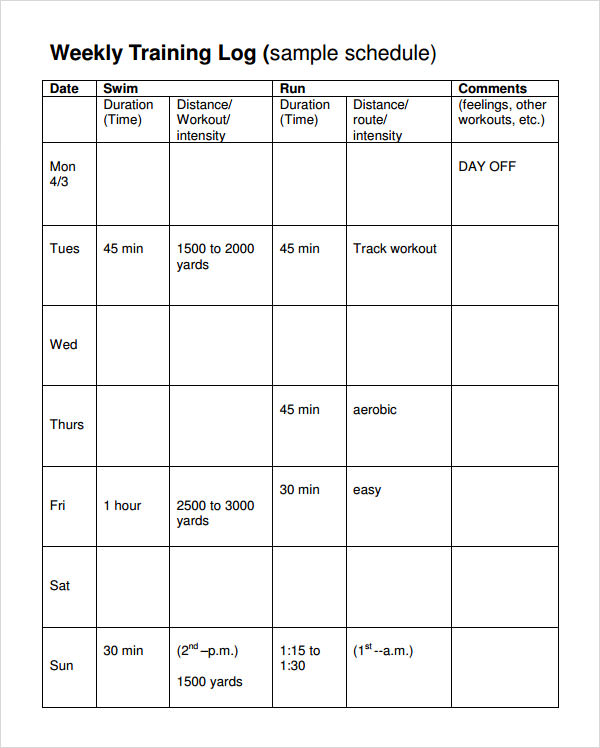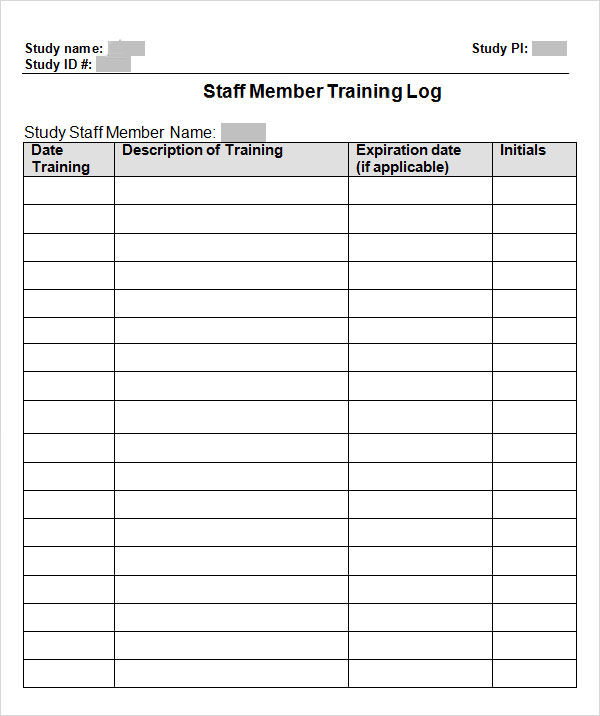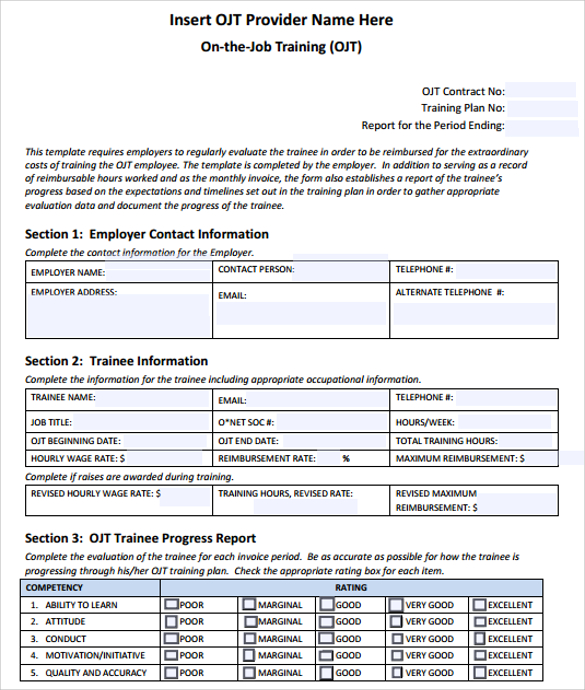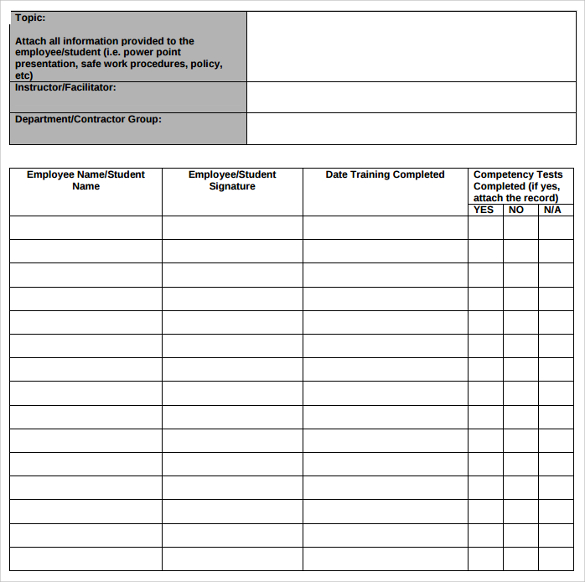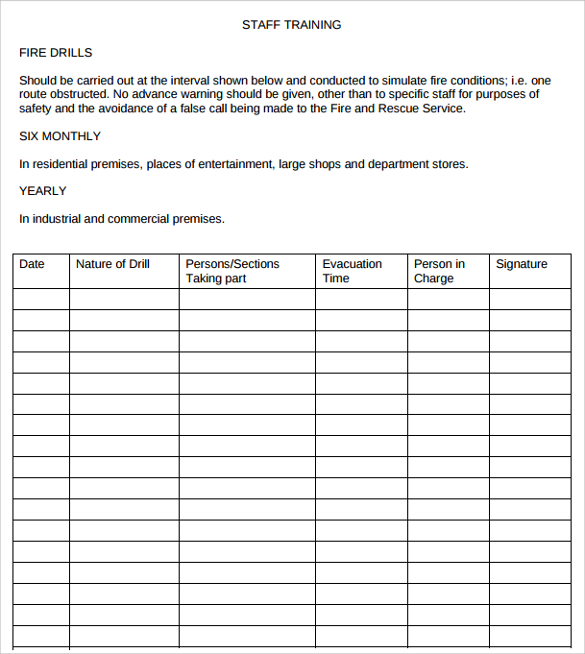Setting objectives and goals, sample planning, deciding, executing, and repeating are the five major stages to attain success. Many a time, you may feel of having a readymade template that can help you to stay productive and monitor your growth over time to analyze how far you’ve succeeded in your pre-defined goals.Training log template samples is one of the best solutions to cater such requirements at large because they comes with pre-defined fields and sections to ensure optimal recording of your defined objectives. All these templates are widely used across diversified segments to ensure proven success and grow higher in their relevant domains. Following are some fo the common log templates available over the web:
Sample Safety Training Log Template
Safety Training Log Template contains all the necessary details that are required to ensure 100% security in a defined domain. The sample is only available for measuring the parameters defined for fire safety in a particular firm, business place, corporate, restaurants, home, and apartments. You can also seek customizable workplace safety, women safety, and other safety templates to keep a check on your safety arrangements in regards to industrial standards.You may also see workout log templates.
Work Out Training Log Template
Staying fit is the demand of the modern world, but many of you may find it highly difficult to trace down your regular fitness routines and the progress you’re making with every passing day. The Work Out Training Log Template is an ideal solution to monitor your physical strength and rate your everyday’s progress for the entire week or month. The template contains various blank fields that can help you to record the description of exercises, weight before and after, daily routine, workout parameters, sets you did previous day, and many others.You may also see key log templates.
Sample Employee Training Log Template
Since learning is constant and everyone is keen to gain knowledge about new things, most of the businesses and corporate organize timely trainings to keep their employees updates with industrial trends. The Employee Training Log Template helps a firm to record the findings of a training workshop and other relevant details including hours invested, outcomes, learning, benefits, date of training, and many more.You may also see workout log sheets.
Weight Training Log Template
Professional trainers and gym enthusiasts love to keep a track of their physical growth. The Weight Training Log Template not only helps you to trace down your progress in terms of physical fitness, but also ensures that you exercise and practice your moves efficiently. The template contains various blank fields and sections including date notes, start time, end time, durations, types of exercises, sets, and others to help you stay fit and healthy.You may also see daily log templates.
Sample Running Training Log Template
The running log template is specially designed for professionals who are engaged in running and swimming activities. The template keeps a record of how far an individual has ran or swims to maintain a week or months chart for his/her fitness. You can add your require details in the duration, date, place, speed, time, and comments fields to evaluate your performance at the end.
Staff Training Log Template
Sample On-Job Training Log Template
University Training Log Template
Sample Fire Staff Training Log Template
Benefits of Using Training Templates
Using already made templates makes it easier to keep a record of activities that one performs in a day- to-day life. Since all of these templates come with blank fields and sections, it becomes highly flexible and easy for professionals to track your success and growth. The analysis of the past months helps an individual to set new goals and objectives for the upcoming months. Using these templates is an ideal solution to record, evaluate, and monitor your daily performance with great ease.You may also see log templates in word
All these templates are available on the web in MS Word, Excel, and PDF formats to cater your diversified requirements. You can download any of these daily log templates and customize them as per your requirements to meet your pre-defined targets with great ease. Since these templates contains blank fields and sections, it becomes easier to add your specialized comments and remarks that can help you while creating a future plan or strategy for physical or professional growth.You may also see weekly log templates
If you have any DMCA issues on this post, please Contact us!
Related Posts
FREE 40+ Sample Concert Ticket Templates in AI | MS Word | Pages | PSD | Publisher | PDF
FREE 8+ Sample Sell Sheet Templates in MS Word | PDF | Excel
FREE 8+ Passport Samples in AI | MS Word | Pages | PSD | Publisher | PDF
FREE 8+ Blank Puzzle Templates in PSD | EPS
FREE 5+ Blank Cheque Samples in PDF | PSD
FREE 7+ Sample Blank Recipe Templates in PDF | PSD | EPS
FREE 12+ Sample Wedding Weekend Itinerary Templates in PDF | MS Word | PSD
FREE 7+ Sample Scoreboards in PSD | EPS
FREE 5+ Paper House Samples in PDF | PSD
FREE 18+ Cookbook Samples in PSD | MS Word | Publisher
FREE 9+ Paper Airplanes in PSD | MS Word
FREE 7+ Printable Macaron Templates in PDF | PSD
FREE 6+ Puzzle Pieces in PSD | EPS
FREE 4+ Check Stub Samples in PSD | PDF
FREE 7+ Amazing Halloween Templates in PSD

